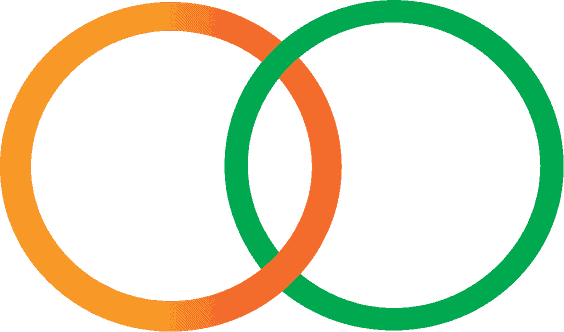Walk & Bike Network Program
What is the Walk and Bicycle Network Grant Program?
The Walk and Bicycle Network Grant Program is a competitive grant program that funds entire networks of walkways and bikeways, intersection safety improvements, and related facilities. Funded at $50 million with calls for projects every two years, it will support four $25 million grant awards each cycle.
What are the Program’s Goals?
The goal is to foster comprehensive and equitable development of a connected network of walk and bicycle facilities linking neighborhoods, transit, schools, employment centers, and other key destinations within a community as efficiently as possible. The network grant would enable a community to make biking and walking safer, more comfortable, and more convenient than driving for everyday needs. Its other goals include:
- Encourage communities to consider a set of more significant improvements as a single network project rather than an unwieldy number of small projects and realize greater mode shift to walking and bicycling in a shorter time period;
- Realize efficiencies in planning and project delivery by combining many smaller projects into one;
- Increase use of public transit by improving access to transit stops and stations;
- Prioritize disadvantaged neighborhoods whose residents suffer the highest risks of traffic violence and who lack affordable, safe transportation options to enable residents of low-income communities of color to benefit the soonest from safe and convenient walk and bicycle routes;
- Engage, educate and encourage residents in a meaningful, culturally- and linguistically-competent manner to help to plan and identify network improvements, and to walk and bicycle more often and increase physical activity in their communities;
- Incentivize local sustainable community policies that will prioritize walking and bicycling in other development and transportation projects that will realize improvements beyond the grant investments;
- Increase active transportation and transit use, decrease vehicle-miles traveled, and contribute significantly to reaching our state and regional climate goals.
What Components of a Walk and Bicycle Network are funded by this grant?
A competitive walk and bicycle network provides low-stress, safe biking and walking routes connecting all destinations in a defined geographic area. “Low-stress bike routes” include neighborhood streets with slow speeds and low traffic volumes, bike paths and multi-use trails, and protected bike lanes on busy streets. “Comfortable and safe walking conditions” include well-lighted sidewalks and paths, amenities where appropriate (shade trees, benches, public art, sound barriers), safety-enhanced crossings utilizing best practices such as sufficient signal timing, countdown timers, and automatic walk cycles (no pushbuttons), and access for people with disabilities. The most successful proposals will also meet the following criteria:
- Every key destination in a community is connected via low-stress bike routes and comfortable and safe walking conditions, including all schools, community centers, senior centers, grocery stores, health care, significant shopping districts, transit stations, hospitals, libraries, parks, and other key community destinations.
- Transit stations–including bus stops, transit center and intra- and inter-city rail stations–are connected with safe and comfortable routes in a ½-mile radius for walking and a 3-mile radius for bicycling.
- At least half of the census tracts in the defined community are disadvantaged neighborhoods;
- At least $1 million invested in non-infrastructure education, encouragement and engagement programs, including Safe Routes to School programs in low-income schools;
- Community resident-identified streetscape and walkability improvements, including but not limited to shade trees, pedestrian-scale lighting, wide sidewalks, public art, and parklets;
- Thorough and high-standard wayfinding systems for bicycling and walking;
- Implement universal design to ensure access for people with disabilities
How will applications to the Walk and Bicycle Network Grant Program be evaluated?
Each application will identify the geographic area to be served and key destinations within that community. Destinations shall include all schools, major transit stops or stations, residential districts, significant retail and employment centers, community centers, senior centers, health care facilities, parks and key recreation destinations, etc. Destinations shall be weighted to reflect the varying number of trips to and from each destination (i.e. a busy transit station will get more weight than a small residential neighborhood) or the community-identified priority of a particular destination. The most important criterion is the degree to which the trips between the identified and weighted destinations are improved to provide a low-stress, safe and convenient walk and bicycle connection. The list of proposed criteria is below:
Local adopted policies (required as a threshold for eligibility)
- Complete streets policy for roadway maintenance and improvement projects.
- Comprehensive sidewalk repair policy.
- Anti-displacement measures for residents and small locally-owned and operated businesses.
- Update to VMT reduction Level of Service update implementing SB 743 OPR Guidelines compliance
- Is the implementation plan feasible?
Connectivity improvements
- What is the change in proportion of walk and bicycle trips that can be made between destinations via low stress routes?
- Is the way-finding system based on best practices?
- Are intersections upgraded to support safe and convenient navigation by pedestrians with high-visibility crosswalks, automatic walk signals, countdown signals, and convenient timing.
Benefits to disadvantaged communities
- To what extent do the newly connected destinations provide mobility benefits as identified by disadvantaged residents in the community?
- Does the proposal address physical, cultural, social, and economic barriers faced by disadvantaged residents of the community that prevent them from walking or bicycling?
- Does the proposal include workforce training or jobs components in implementing the network that is targeted toward disadvantaged residents in the community that face barriers to employment?
Successful public outreach
- What was the involvement of the public, including non-English speaking public, youth, seniors and people with disabilities, in the development of the plan, especially in identifying key destinations and priority improvements?
- Letters of support indicating successful outreach
Quality of the Non-Infrastructure Component
- Will the non-infrastructure component reach all residents? If not, how will implementation of the non-infrastructure component be implemented in a socially equitable manner?
- Is the non-infrastructure component culturally-, linguistically-, and socially-appropriate for the target community?
- Does it involve local community organizations?
Frequently Asked Questions
Q: What if a community hasn’t planned a $25 million network and isn’t ready to submit an application?
A: The first grant cycle of the program would provide network planning grants to prepare communities to submit applications in future funding cycles. Only communities who have received network planning grants would be eligible to apply for network grants in the second round.
Q: Who will administer the program?
A: Caltrans
Q: How will the program be funded?
A: The Program could be funded through an annual, dedicated allocation from the Greenhouse Gas Reduction Fund as a standalone program in the Department of Transportation or as a component of the Active Transportation Program (ATP). If funded as part of the ATP, following the policy that divides ATP funds in three parts (50{850a63fa8a72bae4d6bfa3f1eda9f619cddace10f9053ede128e2914f9ca5a15} statewide, 40{850a63fa8a72bae4d6bfa3f1eda9f619cddace10f9053ede128e2914f9ca5a15} MPO, 10{850a63fa8a72bae4d6bfa3f1eda9f619cddace10f9053ede128e2914f9ca5a15} rural/small urban), this program would necessitate increasing the allocation to MPOs and small urban and rural communities.
Q: What if a community’s network grant application isn’t funded?
A: The program has positive implications even for those proposals that aren’t funded, because each community will have $25 million of “planned and approved” projects eligible for funding from other sources, and strong political and public support for the funding thanks to the outreach process during the planning phase.


